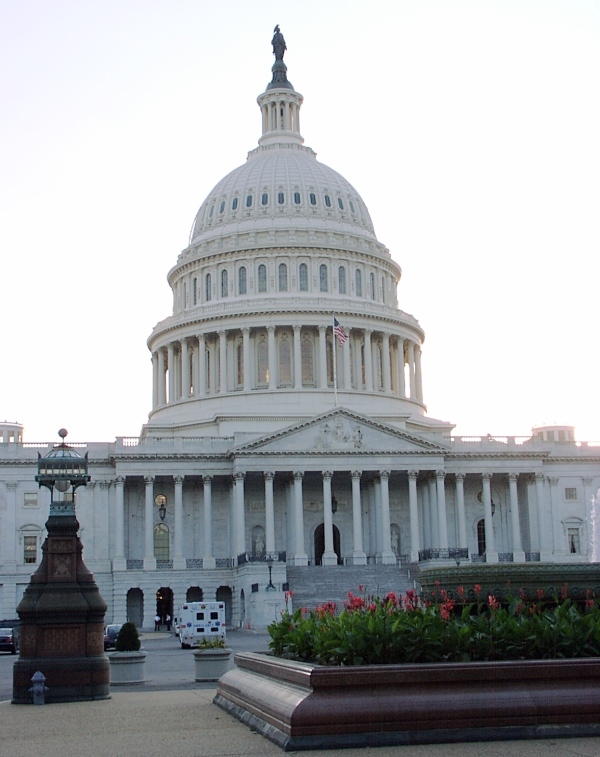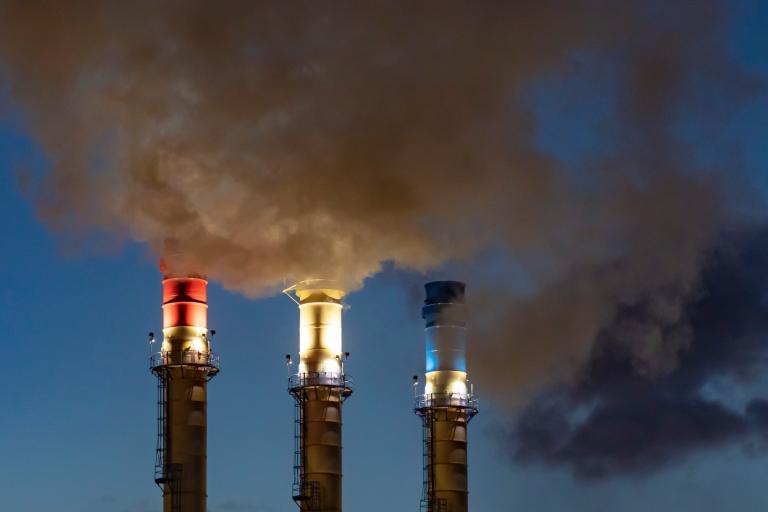The radioactive disinformers of The Breakthrough Institute (TBI) have broken through to the MSM again. This time they got The San Francisco Chronicle to print their willfully misleading op-ed attacking “Obama and Democratic leaders” for supposedly failing to deliver on clean energy promises. As we’ll see, this TBI article sets a new record for phony “apples and oranges” comparisons – but I think it is worth looking at to fully understand the impressive nature of the clean energy investments that Obama and the Democratic leaders have done and plan to do.
The first thing to remember about TBI is that they have dedicated the resources of their organization to killing prospects for climate and clean energy action in this Congress and to spreading disinformation about Obama, Gore, Congressional leaders, Waxman and Markey, and anyone else trying to end our status quo energy policies (see “Memo to media: Don’t be suckered by bad analyses from TBI” and “The dynamic duo of disinformation and doubletalk return” and “”Shellenberger and Nordhaus smear Gore by making stuff up“)
Second, for all their supposed high-minded attacks on Obama and Congress for pushing a bill TBI claims is too weak, TBI has consistently proposed infinitely weaker climate legislation than Waxman-Markey – legislation so dreadful, it probably wouldn’t get a single vote in either house of Congress (as I discuss here). The only surefire way to kill the prospects for serious climate and clean energy action, the only way to kill any chance whatsoever of a global deal to avert catastrophic global warming, is if policymakers listen to The Breakthrough Institute.
Third, their current line of attack – on the clean energy efforts of “Obama and Democratic leaders” – is not just utterly false, it is intentionally and hypocritically misleading, as I demonstrate here: TBI is lying about Obama, misstating what CBO concluded about Waxman-Markey, and publishing deeply flawed analyses. The stimulus bill from “Obama and Democratic leaders” (plus Obama’s budget) increased clean energy funding more than every previous president combined in the past 3 decades (see “Progressives, Obama keep promise to jumpstart clean energy, economy“). Obama’s actions in the transportation sector alone represent the single biggest push toward greenhouse gas reductions and efficent vehicles in US history (see “Obama to raise new car fuel efficiency standard to 39 mpg by 2016 – The biggest step the U.S. government has ever taken to cut CO2“).
But, for the umpteenth time, let me briefly dissect their willfully misleading nonsense. Here is how their op-ed, “Will America lose the clean-energy race?” begins:
As Congress debates climate and energy legislation, Asian challengers are moving rapidly to win the clean-energy race. China alone is reportedly investing $440 billion to $660 billion in its clean-energy industries over 10 years. South Korea is investing a full 2 percent of its gross domestic product in a Green New Deal. And Japan is redoubling incentives for solar, aiming for a 20-fold expansion in installed solar energy by 2020.
In contrast, the United States would invest only about $1.2 billion annually in energy research and development and roughly $10 billion in the clean energy sector as a whole under the Waxman-Markey bill – less than 0.1 percent of U.S. GDP. A group of 34 Nobel laureates recently wrote a letter to President Obama decrying the lack of investment and calling on him to uphold his promise to invest $15 billion annually in clean-energy R&D.
So many misleading statements, so little time.
- Note that the China figure – while it is certainly impressive and definitely should motivate U.S. action (as I have argued) – is “reported” and cumulative over 10 years. It is part of their stimulus and NOT just R&D, but an investment in clean-energy industries broadly defined (and the exact figure going to clean energy is the subject of some debate).
- Note that South Korea’s Green New Deal – $38 billion cumulative over the next four years – is a stimulus bill covering all environmental projects (not just clean energy) and includes, for instance, “More than 2,500 miles of bicycle expressways.” As the Guardian reported in April, the SK government promises to spend only about $1.8 billion “on research into low-carbon technologies” and “the renewable energy spending share of South Korea’s green new deal is a disappointingly low £80m [$120 million] mostly on solar-powered homes, photovoltaic heating and geothermal power sources for apartment blocks.”
- Note that Japan’s investment is also from an expected “new stimulus plan,” as Reuters explained in April article with the less than ominous headline, “Japan solar subsidies lure fewer users than planned.” Note also the use of the key word “aiming” for a 20-fold expansion. In fact, as Reuters explains “A top economic and fiscal policy advisory committee said last month that Japan should increase its solar power capacity 20-fold by 2020 from 2005 levels.”
Now if you didn’t know TBI, you would think that if they listed the planned or expected stimulus investments in the entire clean energy industry from R&D to deployment in the three Asian countries, that they would have the intellectual honesty to compare that to similar investments in the already-enacted-into-law U.S. stimulus bill. But, of course, if they did that, they couldn’t possibly attack “Obama and Democratic leaders.” If they did that, they wouldn’t be TBI.
The Congressional stimulus bill Obama signed included $71 billion for clean energy programs plus $20 billion in clean energy tax incentives (for details, see “Progressives, Obama keep promise to jumpstart clean energy, economy“). Kind of blows South Korea’s scary “Green New Deal” out of the water.
And as TBI knows, Obama didn’t “promise to invest $15 billion annually in clean-energy R&D.” Even the Nobel laureates admit it was $15 billion a year in clean technology funding broadly defined. In fact, as candidate Obama’s “New Energy for America” plan makes clear, it covers R&D, demonstration, commercialization, and deployment. Thus, the stimulus bill alone takes Obama 60% of the way to meeting his entire 10-year goal. And of course Obama has begun to aggressively increase clean energy R&D in his annual budget proposals – and plans to do much more (see Obama vows “we will exceed [R&D] level achieved at the height of the space race”). If we’re going to count the plans of China, SK, and Japan, we certainly should be counting the plans of Obama.
The stimulus represents such a staggering increase in clean energy funding that by itself it lead the U.S. Energy Information Administration to project a 12-fold increase in U.S. solar PV capacity to 12 GW by 2020 (see “EIA projects wind at 5% of U.S. electricity in 2012, all renewables at 14%, thanks to Obama stimulus!“). And the EIA absurdly assumes that the federal government never spends another nickel incentivizing clean energy once the stimulus bill funds run out and that we never pass a climate bill. A March report that isn’t hamstrung by such dubious assumptions, “Global Solar Photovoltaic Market Analysis and Forecasts to 2020,” projects
The US to lead the Global Solar PV Market by 2020
The significant growth witnessed by the US solar PV sector could be attributed to the strong support from the US Government in terms of tax credits. The recent extension of tax credits with effect from 1st January, 2009 till the year 2016, will further drive the US Solar PV market towards the growth trajectory. Considering this, the US Solar PV market is expected to grow at a higher CAGR [Compound Annual Growth Rate] of nearly 50% in the coming years, to reach total installed capacity of more than 75 GW by the year end 2020.
That would be five times what Japan will achieve assuming it listens to that “economic and fiscal policy advisory committee.”
Finally, assuming that US policymakers don’t listen to TBI, we will enact a clean energy bill that looks something like Waxman-Markey (ideally, of course, one even better than W-M). Of course, after presenting the possible cumulative planned investments plan by our Asian competitors in their stimulus packages and ignoring entirely the actual US investment in our stimulus, TBI then provides only projected annual investments from the climate bill – “about $1.2 billion annually in energy research and development and roughly $10 billion in the clean energy sector as a whole under the Waxman-Markey bill.”
In fact, as the authors of the clean energy bill explain in their summary (see here):
ACES invests over $190 billion through 2025 in clean energy and energy efficiency programs.
So from 2012 through 2025, the bill invests more than $190 billion in clean energy research and development and demonstration and deployment programs, which just happens to come to nearly $14 billion a year – not the $10 billion a year TBI says. And that doesn’t even include the clean energy bank, which could drive many more billions of dollars in funding to clean energy. And it does assume a relatively low price for CO2, as I expect. But the actual funding could be far higher. Nor does it add in the many tens of billions of dollars – and eventually hundreds of billions of dollars – of private sector funding for clean energy that a rising carbon dioxide price (and shrinking CO2 cap) would drive.
Our best hope for completing the transition to a clean energy economy is to stay as far away as possible from the radioactive analysis and analysts of The Breakthrough Institute. As I’ve noted many times, they need Waxman-Markey to fail, otherwise all their claims that the environmental movement keeps imploding would be seen by everyone as the sham that it is.






